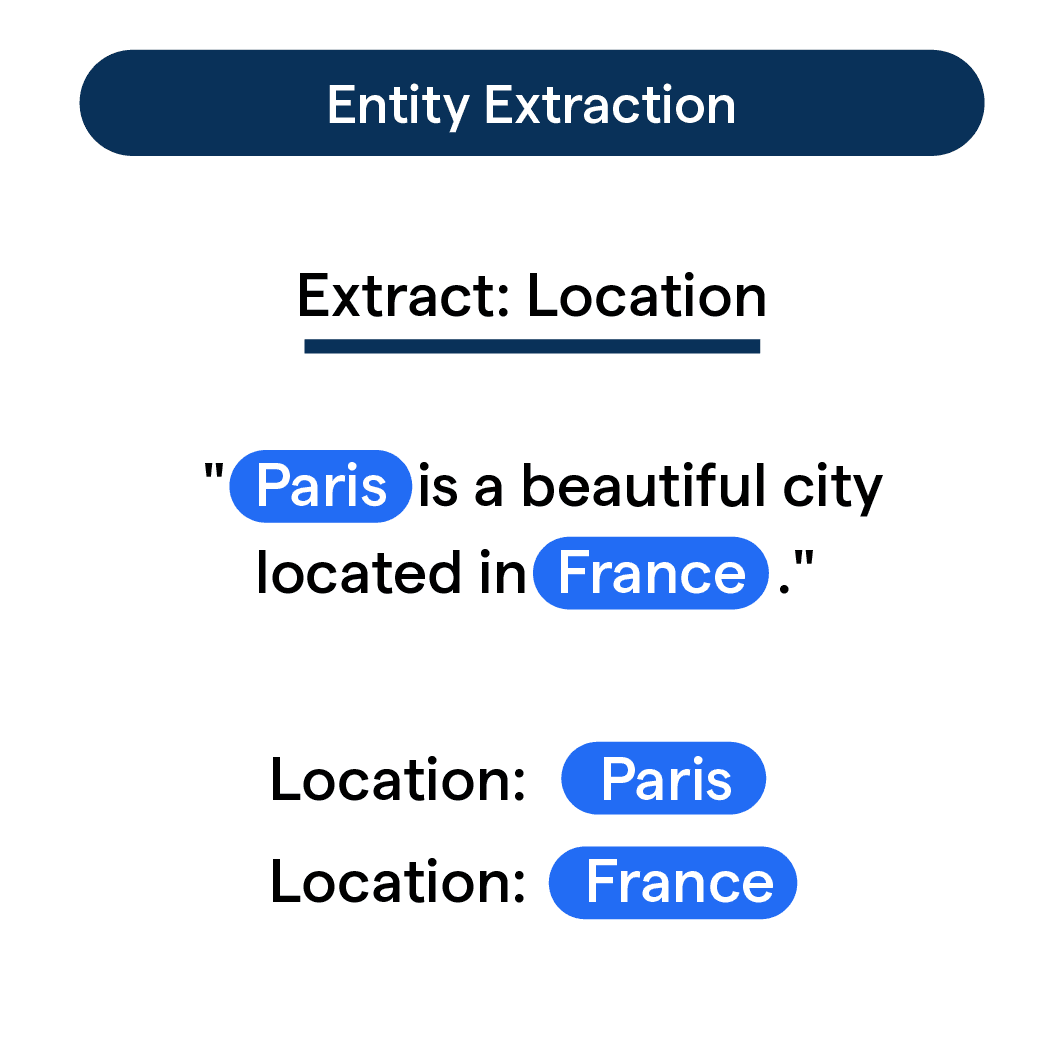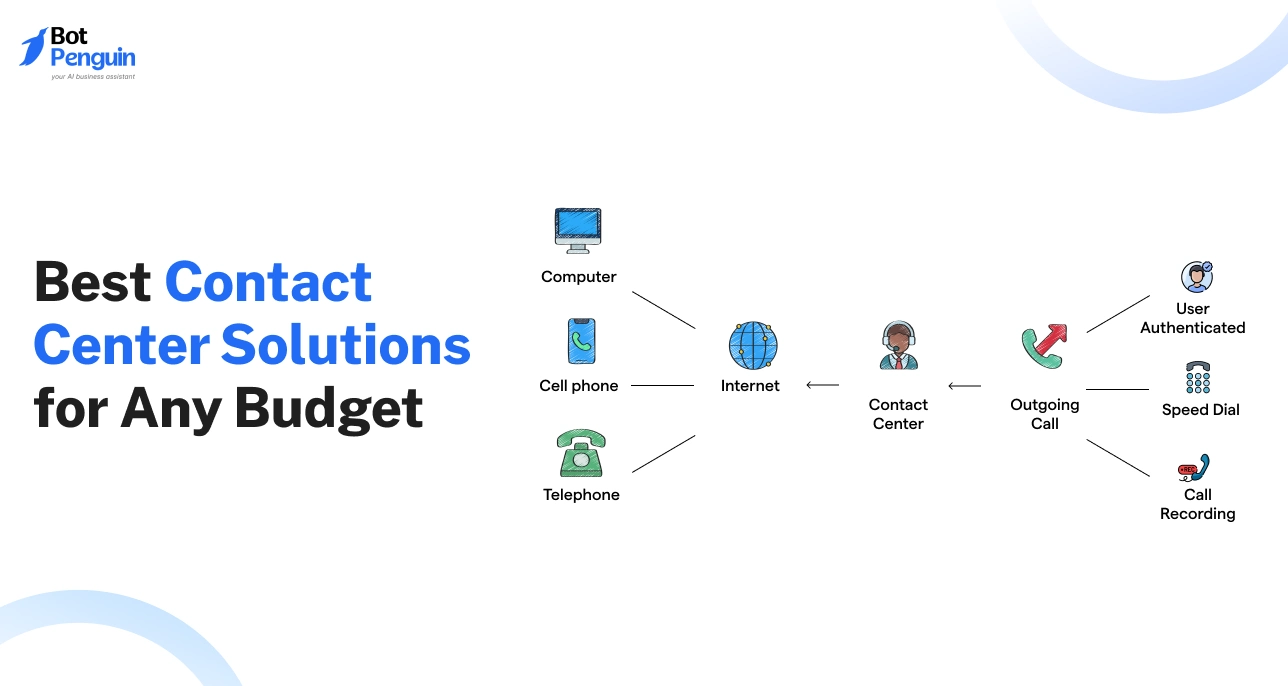What is Entity Extraction?
Entity extraction is a natural language processing (NLP) technique that involves identifying and extracting specific entities or elements from unstructured text data. These entities can be names of people, organizations, locations, dates, currencies, or any other predefined categories.
How it Differs from Other NLP Techniques
While other NLP techniques focus on understanding the overall context or sentiment of the text, entity extraction specifically targets the identification and extraction of specific entities mentioned within the text.
Importance of Entity Extraction
Entity extraction plays a crucial role in various domains such as information retrieval, document classification, sentiment analysis, recommendation systems, and more. By extracting entities from textual data, it becomes easier to analyze, categorize, and understand the information contained in unstructured text.
Who Uses Entity Extraction?
Let's explore various industries and professionals who benefit from the powerful technique of entity extraction.
Market Research Analysts
Analyzing large volumes of text data is crucial for market researchers. Entity extraction allows them to identify key components like companies, products, and trends, enabling them to derive valuable insights.
Financial Institutions
Banks and financial organizations need to keep track of entities like customers, transactions, and market players. Entity extraction streamlines this process and makes data mining a breeze.
Healthcare Professionals
Medical researchers, doctors, and pharmaceutical companies can leverage entity extraction to detect important entities such as medical terms, symptoms, diseases, and drug names from a wealth of unstructured data.
Law Enforcement Agencies
Entity extraction helps law enforcement and security professionals understand patterns in criminal activities, identify suspects, and uncover crucial evidence by extracting relevant information from texts and documents.
Media Monitoring Firms
Media monitoring companies analyze news, social media, and online content. Entity extraction assists them in identifying vital aspects like entities, events, and sentiment, resulting in targeted, actionable insights.
When is Entity Extraction Needed?
In this section, we'll explore situations where entity extraction might be necessary.
Text Analysis
Entity extraction is critical for text analysis, where identifying people, places, or organizations can help gauge sentiments, analyze social media buzz, or understand the context of conversations.
Data Management
In data management, entity extraction aids in organizing unstructured data. It helps categorize and tag data which simplifies future searches.
Customer Service and Feedback
Understanding customer feedback and queries can be expedited using entity extraction. It helps identify core issues or subjects, improving response time and efficiency.
Market Research and Intelligence
In market research, entity extraction helps identify key players, trends, or events by extracting relevant information from vast amounts of unstructured data.
Surveillance and Monitoring
Entity extraction is vital in surveillance systems to identify and track particular entities like specific individuals, locations, or objects, assisting in proactive threat detection and prevention.
How Does Entity Extraction Work?
Let's explore the inner workings of entity extraction as it sifts through text, seeking out significant components.
Tokenization
Tokenization is the process of breaking down the input text into individual words or tokens. This is the first step in entity extraction, making the text more digestible for analysis.
Part-of-Speech Tagging
The system assigns each token its corresponding part of speech, such as noun, verb, or adjective. This process, known as part-of-speech tagging, helps the entity extraction algorithm distinguish important terms and recognize entities.
Entity Recognition
During entity recognition, the algorithm identifies possible entities in the text based on predefined patterns, linguistic rules, or machine learning models. Common entities include names, dates, places, and organizations.
Entity Resolution
The extracted entities can undergo a process called entity resolution, which groups or links entities that are contextually related or refer to the same real-world object or concept. This step helps to filter out duplicate or redundant entities.
Output Generation
Lastly, the entity extraction tool outputs the relevant entities as structured data, making it easily readable and analyzable. This information aids decision-making and further analysis.
Types of Entity Extraction
In this section, we'll delve into various entity extraction techniques used in Natural Language Processing.
Rule-Based Entity Extraction
Discuss how predefined rules and patterns are employed for extracting information from texts.
Statistical Entity Extraction
Explain how statistical techniques are applied to identify entities in unstructured data based on probability models.
Machine Learning-Based Entity Extraction
Explore the use of machine learning to train models to recognize and classify entities in textual data.
Hybrid Approaches for Entity Extraction
Discover how combining different techniques can improve the accuracy and reliability of entity extraction.
Evaluation and Challenges in Entity Extraction
Discuss the relevance of evaluation, common metrics, and challenges faced within the realm of entity extraction research.
Challenges in Entity Extraction
In this section, we will identify various challenges that can occur in the process of entity extraction.
Handling Ambiguity
Entity extraction systems may struggle to correctly identify entities when there are ambiguities in the text. This can involve things like words that have multiple meanings, or homonyms that can cause confusion.
Recognizing Entities Across Languages
Expanding an entity extraction system to handle multiple languages is a significant challenge. Different languages follow different syntactic and grammatical rules, which requires customizing the extraction process for each one.
Dealing with Unstructured Data
A large portion of real-world data exists in unstructured formats. Extracting entities from such data requires advanced algorithms and techniques, putting substantial computational demand on the system.
Maintaining Context Awareness
Entities often need to be understood in the context of surrounding text. Maintaining context in large documents or across documents is challenging but fundamental for accurately identifying entities.
Resolving Entity Variations
Entities might appear in different forms or variations in a text. Entity extraction systems must be robust enough to recognize and link together these various forms to the same entity, despite differences in appearance.
Frequently Asked Questions (FAQs)
What is Entity and Entity Extraction?
In natural language processing (NLP), entities are real-world objects or concepts mentioned in text. These can be people, organizations, locations, dates, or other categories.
NLP tasks like information extraction often rely on identifying entities
Entity extraction is an NLP technique to identify and classify specific entities, such as names, places, and dates, within unstructured text data.
Why is Entity Extraction important?
This technique helps in gathering insights from text data, organizing information, and enhancing search functionality in applications, making unstructured data easy to analyze.
How does Entity Extraction work?
Entity extraction uses machine learning algorithms, pattern recognition, and linguistic rules to identify and categorize relevant entities in the text.
What are common Entity Extraction types?
Popular types include person names, locations, organizations, dates, currencies, percentages, and often industry-specific entities, like pharmaceuticals or legal terms.
Can Entity Extraction support multiple languages?
Yes, entity extraction models can be trained for specific languages or can leverage multilingual models to support text analysis in various languages.



